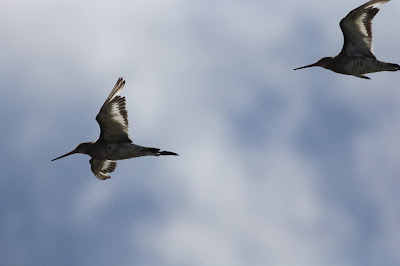Here the article that I wrote for the Wader Quest newsletter in april 2018 about the shorebirds in my home county. The pictures are also mine.
The text for a better reading:
Page 10
© Wader Quest 2018. All rights reserved.
Wader Quest the newsletter
Navarra province is located in Northern Spain, close to de Bay of Biscay (about eighty km from the coast) and shares the Pyrenean mountain range with France in its westernmost and less altitudinal part. Navarra is relatively small in size covering just 10.391km2 but has many different climate zones within it s area.
This strategic emplacement, with the two special geographical characteristics mentioned above, makes Navarra one of the most important regions in bird migration of western Europe. Many thousands of birds, comprising a wide variety of species including passerines, cranes, pigeons, raptors (principally in the Lindux pass) are the better known examples that use this natural corridor. But waders too, in more moderate numbers, pass the same way but their nocturnal migratory habits make them less visible and obvious.
Generally birds on their postnuptial, southerly, migration in autumn register higher numbers, in more concentrated densities, than they do on their prenuptial, northerly, spring journeys. Waders however are recorded in similar numbers on both journeys.
Due to this natural phenomenon traditional hunting is deeply rooted in the region, where Woodpigeons Columba palumbus and Eurasian Woodcocks Scolopax rusticola are the preferred game birds of the local hunters.
There is a wide variety of wader species that choose this route for their migration. Up to now thirty-seven species have been recorded of which four are Nearctic species; Pectoral Sandpiper Calidris melanotos, White-rumped Sandpiper Calidris fuscicollis (personal record), American Golden Plover Pluvialis dominica and Lesser Yellowlegs Tringa flavipes.
Birds such as Dunlin Calidris alpina, Red Knot Calidris canutus, Curlew Sandpiper Calidris ferruginea, Temminck’s Stint Calidris temminckii, Sanderling Calidris alba, Eurasian Whimbrel Numenius phaeopus and most of the Plovers including Grey Plover Pluvialis squatarola and Eurasian Dotterel Charadrius morinellus use the region as a flyway corridor that connects their wintering sites in southern Spain or Africa, with their breeding territories in the Arctic tundra or Northern Europe.
Obviously the region provides some valuable and legally protected reservoirs, lagoons and other water bodies, forested areas and marshes where migrating birds find protection to roost and feed to replenish their fat reserves.
In some of these spots waders pass the autumn and winter seasons. The most representative species, which achieve the highest numbers by far, are Northern Lapwings Vanellus vanellus and Eurasian Woodcocks, followed by Common Snipes Gallinago gallinago and a few Jack Snipes Lymnocryptes minimus each year, It is likely however that the secretive behaviour of these birds masks the true numbers that pass through. In addition Ruffs Calidris pugnax, Green Sandpipers Tringa ochropus can be found in variable numbers and, not always common, we can observe Dunlins, European Golden Plovers Pluvialis apricaria and Black- tailed Godwits Limosa limosa.
Navarra also provides suitable habitats for breeding waders such as the Common Sandpiper Actitis hypoleucos and...........(*)
Page 11
© Wader Quest 2018. All rights reserved.
(*)..........the Little Ringed Plover Charadrius dubius which are the most numerous due to the ample number of river banks that are present throughout the territory (mainly Arga,Aragon and Ebro rivers).
Variable numbers of Black-winged Stilts Himantpous himantopus and Northern Lapwings also breed in flooded fields and ricefields as well as the Eurasian Woodcocks in some of the northern wooded mountains. As it is both a local breeder and a wintering bird, the Eurasian Stone-curlew is always present in suitable habitats all year especially so in the southern part of Navarra with extensive semi arid moors.
Sadly though numbers are declining due to the agricultural transformation from traditional rain-fed crops such as wheat to irrigated plants like corn and olive tree plantations in some suitable areas.
It is also necessary to point out that many waders find much needed shelter and protection in a variety of suitable habitats. In the last decades three regions that contain rice fields (Arguedas, Rada, Figarol) have proved to be highly important for wintering, as well as for, migrating birds, offering rich mudflats in otherwise not very suitable habitat for them.
This is especially helpful to Lapwings, Snipes, a few European Golden Plovers in winter and in the migratory seasons to Little Stints Calidris minutus, Dunlins, Black-tailed Godwits and many others in more moderate numbers.
The most important wetlands are La Laguna de Pitillas (Pitillas), La Balsa de Zolina (Pamplona, Navarra’s capital city), La Balsa de Loza (Loza), Laguna Las cañas (Viana) Badina Escudera (Villafranca), Salobre de Sesma (Sesma) and Balsa de Bajabon (Ablitas).
Combined these features make Navarra a highly interesting region for wader watching due to its diversity and it’s relative small size were all the hot spots are easily accessible with relatively short distances between them.
www.ornitocampero.blogspot.com.es
Volume 5 Issue 1



















































